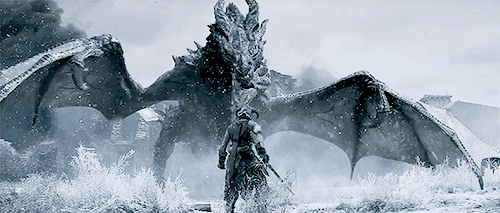
The name “wyvern” is derived from the Anglo-Saxon word Wivere, which means serpent or worm. Old Saxon-related stories of fire monsters/worms falling from the sky to bury themselves deep in the ground never to come out again as they guarded their treasure, thought to be meteorites.
Wyverns are like a lesser cousin of the classic dragon, fire-breathing and fearsome but with some key differences. Here’s a rundown:
- Looks: Imagine a dragon with two legs instead of four. That’s the main difference. Wyverns have a dragon’s head, wings, and a long, powerful tail, sometimes barbed or tipped with a venomous stinger.
- Abilities: While some legends say wyverns breathe fire, others focus on their agility and brute strength. Their venom-laced tail is a frequent weapon.
- Origins: Wyverns come from European myths and legends, especially medieval bestiaries. They were often depicted as solitary and vicious creatures guarding treasure or lairs.
- Symbolism: In heraldry, the wyvern is a symbol of power and ferocity. It’s a popular emblem for coats of arms and flags. In modern times, wyverns appear in fantasy fiction and video games, sometimes portrayed as heroic or even wise creatures.
In England, they have been referred to as ‘dragonets’ because they are generally small in stature and appear to be adolescent dragons when in fact their body parts are fundamentally different. The Wyvern has a distinctive two-legged stance and their wings are true wings (derived from the forelimbs) like those of bats or birds. Sometimes these wings are depicted as “hands”, such that a Wyvern can clasp when the wings are folded in front of them.
The Wyvern has eagle-like talons, a beak-like jaw that is essential in carrying food as well as a deadly barbed stinger at the tip of their tail. They live in caverns or similar protected lairs commonly found in forests and woods. The lairs can be identified by the debris of bones and valuables. These they gather, because like dragons, they are attracted to shiny objects and baubles. ‘Dragonets’ are far less discerning and their ‘hoards’ will contain as much rubbish as gold.
Wyverns are far less timid than most dragons and were once known in Europe, especially in England, before weapons technology and the growth of human populations depleted their numbers. Leonardo da Vinci recorded an encounter he observed between a lion and a wyvern; although it seems unlikely that he observed it firsthand.



In the bestiaries of the Middle Ages, the wyvern was used as an allegory of Satan and was associated with war, pestilence, and sin. It was especially said to spread the plague, a heinous charge in medieval Europe reeling from the horrors of the Black Death.
The Wyvern was given other meanings too. The medieval alchemists dressed their knowledge in obscure codes and allegories, and the wyvern represented matter in its basest state. The alchemist himself was depicted as the worthy knight overcoming the beast — that is, transforming it into gold.
Wyverns survive today mainly as a heraldic emblem. Wyverns tend to represent war, envy, might, and conquest — and are a sign of strength to those who have born it through the ages on pennants, shields coat-of-arms, and the like. While they must be considered virtually non-existent, the relatively undisturbed mountains and forests of Eastern Europe and Russia just may conceal a few surviving wyverns.





